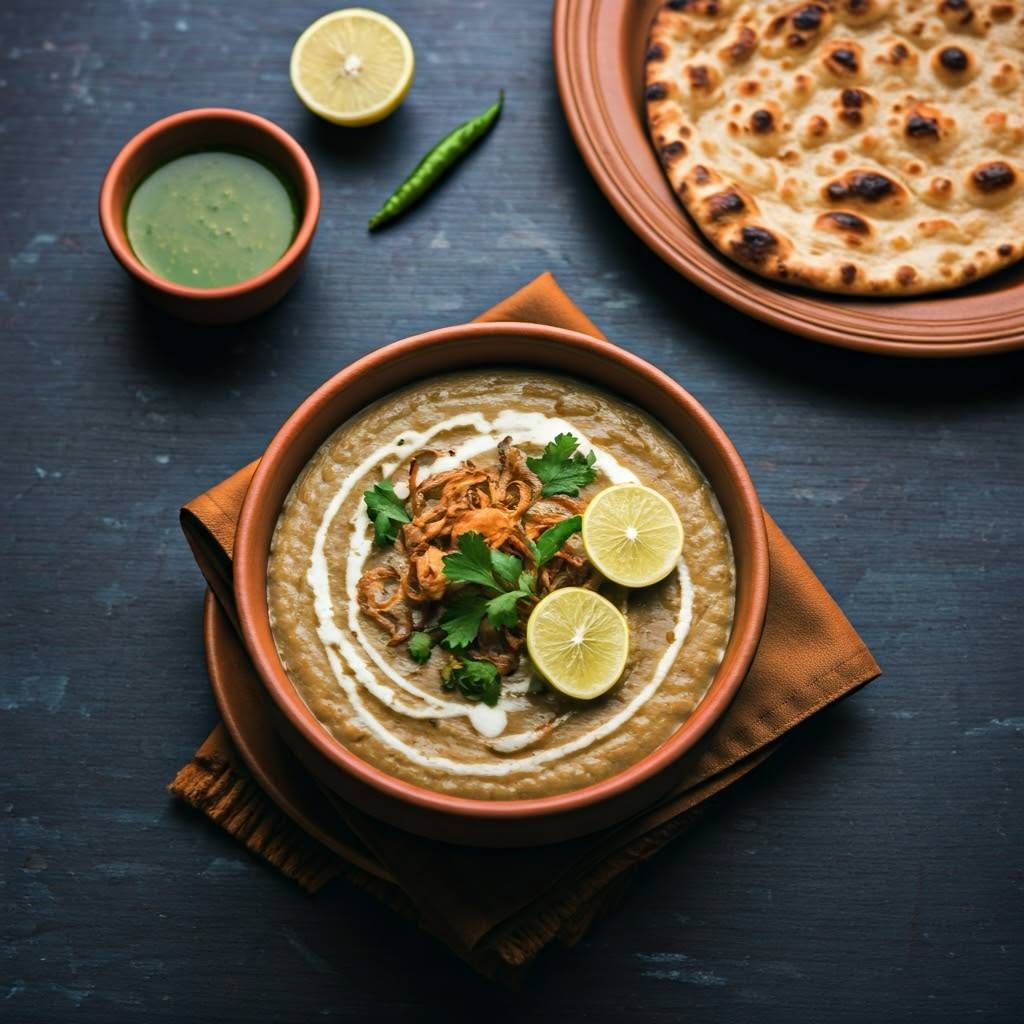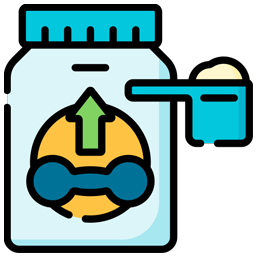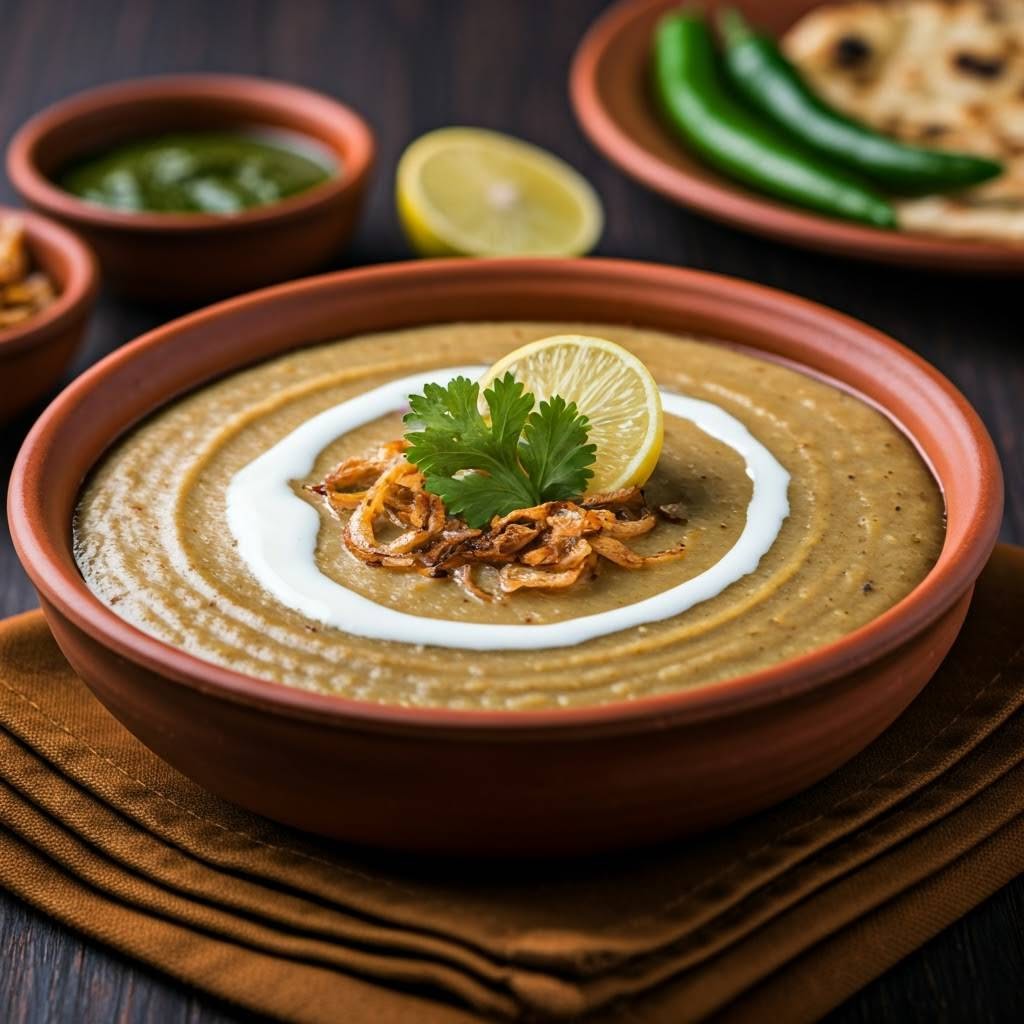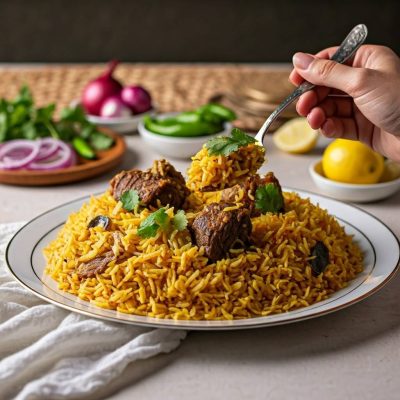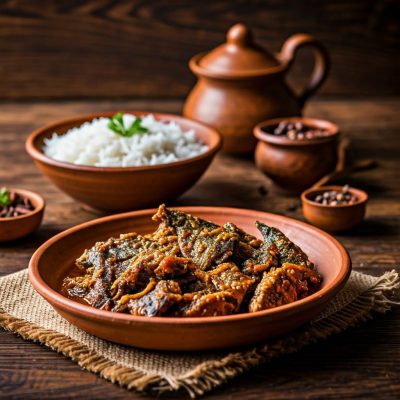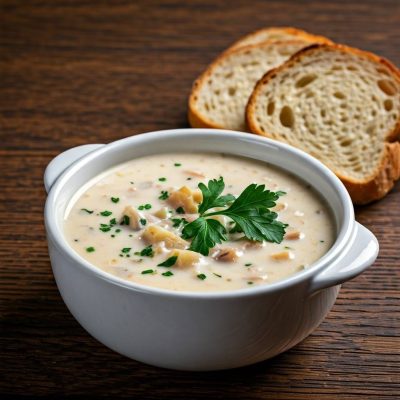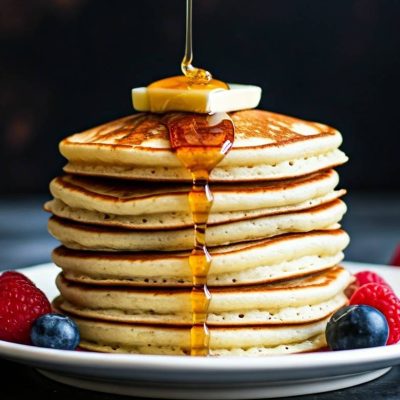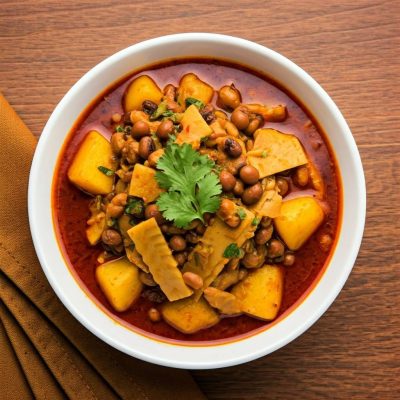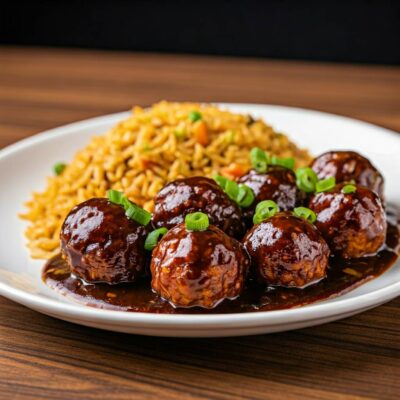Ingredients
For the Haleem Base
- 1 cup broken wheat (daliya)
- ¼ cup basmati rice
- ¼ cup chana dal (split chickpeas)
- ¼ cup toor dal (pigeon peas)
- ¼ cup masoor dal (red lentils)
- ¼ cup moong dal (yellow lentils)
- ¼ cup urad dal (split black gram)
- 1 kg mutton or chicken (with bones)
- 2 onions (sliced)
- 1 tbsp ginger-garlic paste
- 2 green chilies (chopped)
- 1 tsp turmeric powder
- 1 tsp red chili powder
- 1 tsp coriander powder
- 1 tsp garam masala
- 1 tsp cumin powder
- ½ tsp black pepper powder
- 6 cups water (for cooking)
For Tadka (Tempering)
- 2 tbsp ghee
- 1 tbsp oil
- 1 tsp cumin seeds
- 2 cloves
- 1-inch cinnamon stick
- 2 cardamoms
- 1 bay leaf
For Garnishing
- Fried onions
- Fresh coriander leaves
- Mint leaves
- Lemon wedges
- Sliced green chilies
- Julienne-cut ginger
- Ghee (optional)
Directions
Haleem is a rich, savory stew that combines wheat, lentils, and meat, typically mutton or chicken, cooked slowly to develop a creamy, thick texture. Originating from the Middle East, it is widely enjoyed across South Asia and Central Asia, particularly during Ramadan and festive occasions. The dish is flavored with a blend of aromatic spices such as cumin, coriander, garam masala, and turmeric, and is often garnished with fried onions, fresh herbs, and a squeeze of lemon.
The beauty of Haleem lies in its comforting, rich consistency, which is achieved through slow cooking, allowing the grains and meat to meld into a smooth, creamy dish. Traditionally served hot, it is often enjoyed with naan, roti, or rice and is considered a wholesome, satisfying meal. Haleem holds cultural significance in many regions, symbolizing both comfort and celebration.
Nutrition Disclaimer:
The nutritional information provided is an estimate and may vary based on portion sizes, ingredients, and specific brands used. For more accurate nutritional values, please consult a registered dietitian or use a detailed nutritional calculator.
Steps
1 Done | Cook the Grains & Lentils1. Wash and soak broken wheat, rice, and all the dals for 1–2 hours. 2. In a pressure cooker, add the soaked grains, 6 cups of water, salt, turmeric, and cook for 6–7 whistles (or until soft). 3. Blend the mixture into a smooth, thick paste using a hand blender. |
2 Done | Cook the Meat1. In a separate pot, heat oil and add sliced onions. Fry until golden brown. 2. Add ginger-garlic paste and green chilies. Sauté until the raw smell disappears. 3. Add mutton or chicken, turmeric, chili powder, coriander powder, cumin powder, and garam masala. Sauté for a few minutes. 4. Add 2 cups of water, cover, and cook until the meat is tender (about 45 minutes to 1 hour for mutton, 25 minutes for chicken). 5. Once cooked, shred the meat and discard any bones. |
3 Done | Combine and Cook the Haleem1. Add the blended lentils to the shredded meat mixture. 2. Stir continuously on low heat to avoid sticking. Cook for another 30–40 minutes until thick and creamy. 3. Add black pepper and adjust salt if needed. |
4 Done | Prepare Tadka (Tempering)1. In a pan, heat ghee and oil. Add cumin seeds, cloves, cinnamon, cardamoms, and bay leaf. 2. Pour this tadka into the Haleem and mix well. |
5 Done | Garnish and ServeTop with fried onions, fresh coriander, mint, green chilies, and julienned ginger. Serve hot with lemon wedges and extra ghee. This Haleem is thick, creamy, and bursting with flavors! You can pair it with naan, roti, or simply enjoy it as a meal on its own. 😊 Creamy Garnish Options: Traditionally, Haleem is not garnished with cream, but you can add a touch of cream if you like a richer, creamier taste! Here are some ideas: ✅ Fresh Cream: Drizzle a little fresh cream on top just before serving for extra richness. ✅ Greek Yogurt: A dollop of thick yogurt can add a tangy contrast. ✅ Coconut Cream: If you want a slight Thai twist, coconut cream can work well, adding mild sweetness. If you’re adding cream, try mixing it gently instead of fully blending, so you get that creamy swirl effect. You can also combine it with fried onions and mint for a balanced topping! 😋 |

